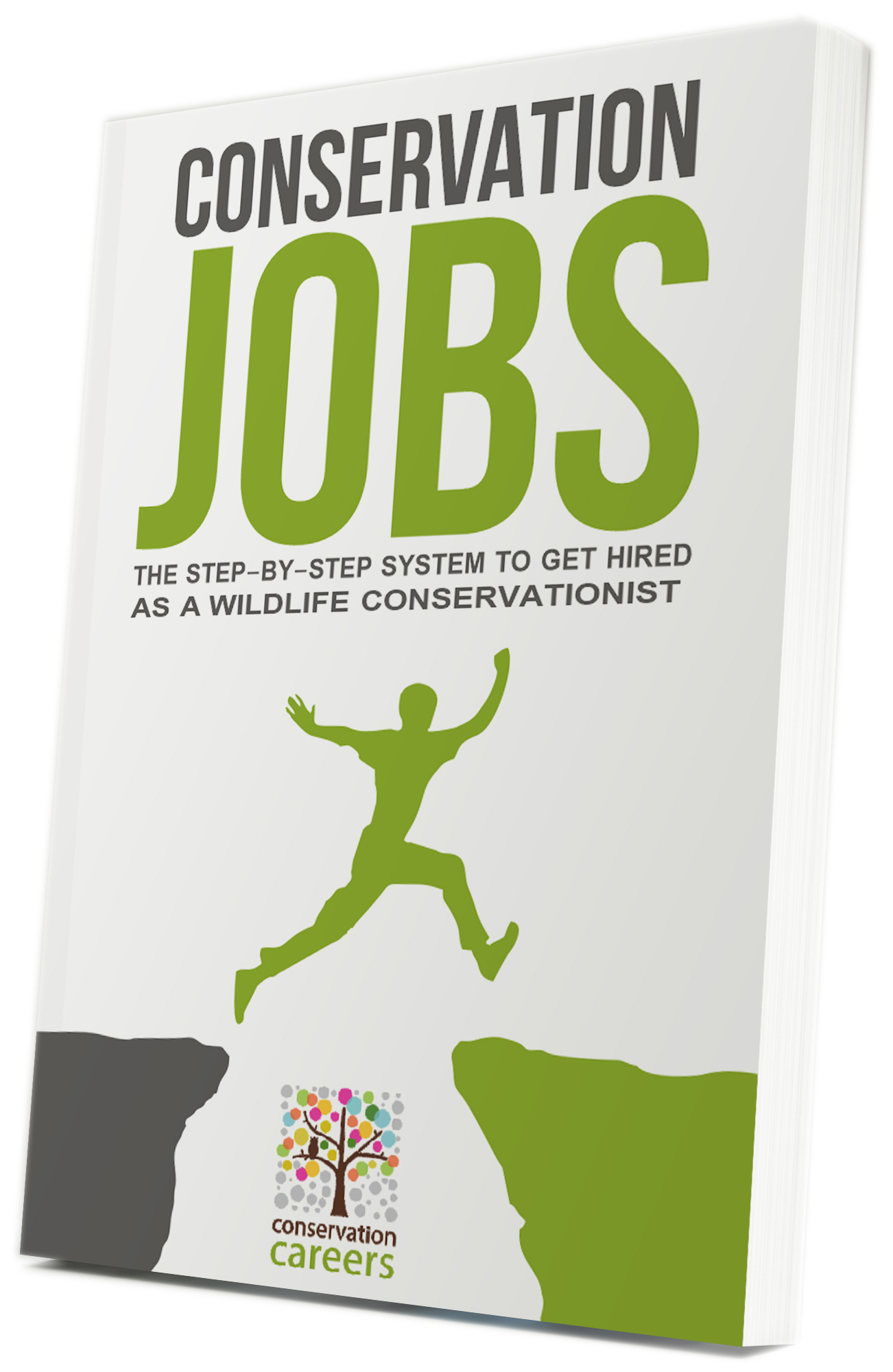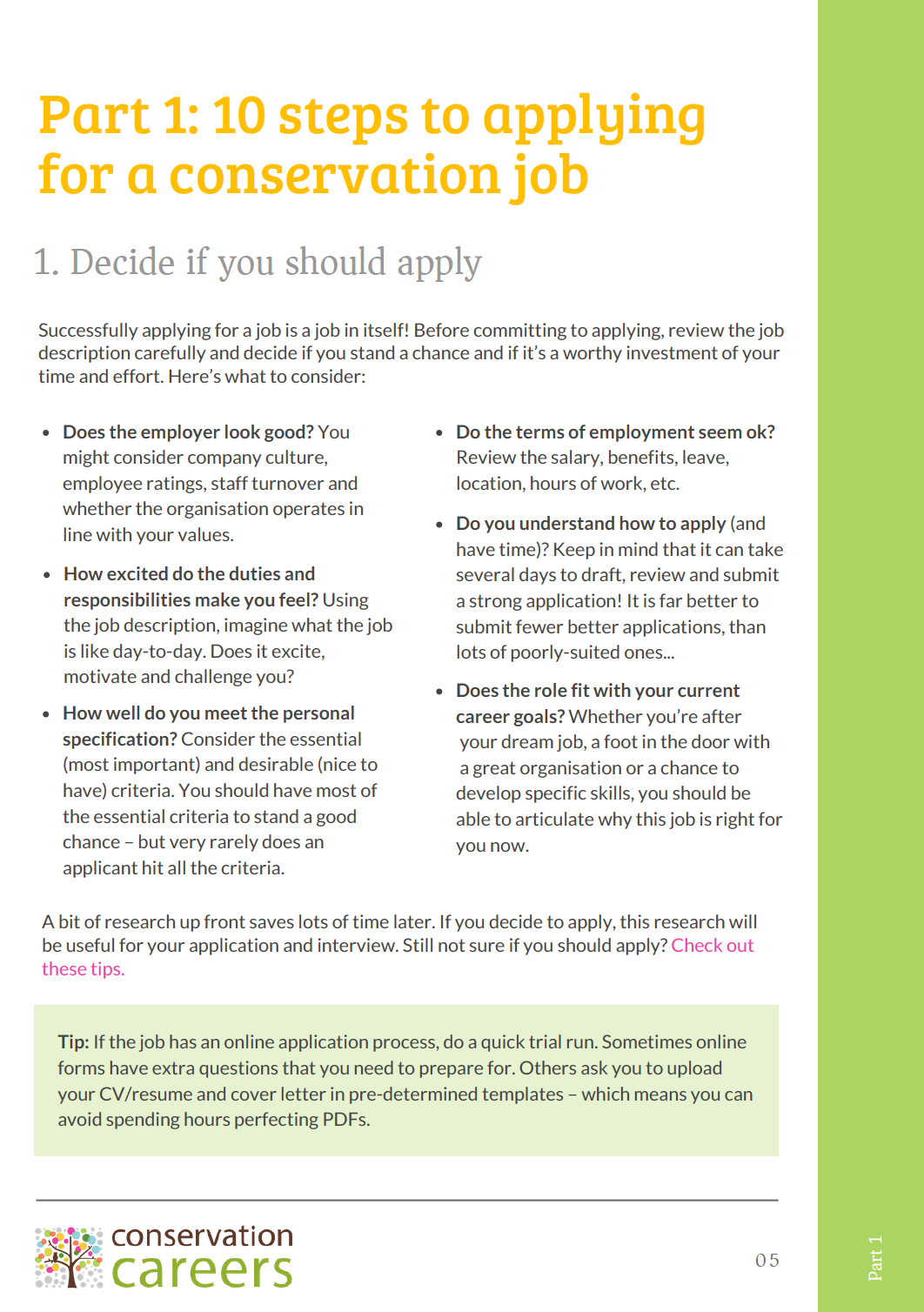
How to give great feedback to all job applicants in under 20 minutes
One conservation job, 600 applicants. Even for a notoriously competitive sector, it seems an impossibly high number. But during Covid 19, we heard from two conservation employers who received over 500 and 600 applicants each for single job openings.
High volumes of applications are most common for highly-appealing entry-level and early career roles, where there is often a bottleneck of applicants – both graduates and career switchers – seeking to start their careers. But few conservation employers, particularly smaller organisations, have the systems or resources to manage this volume of applications. Imagine the staff hours it takes just to screen and shortlist hundreds of applications, let alone provide individual feedback to unsuccessful applicants.
Meanwhile, at Conservation Careers we often hear from conservation job seekers who are struggling to receive feedback from employers to improve their applications and boost their employability. Many are devastated when they’re unsuccessful, but don’t know how to improve their chances.
It’s a lose-lose-lose situation for employers, applicants and the conservation sector!

Recruitment shouldn’t feel like this – for the employer or applicants.
Does application feedback matter?
It might seem like giving feedback is low down on your list of priorities as an employer, but here are a few reasons why it’s important:
- In the conservation sector in particular, applicants are often also close supporters and ambassadors. If you treat them well, you’re likely to win their continued support. If you treat them poorly, you may lose this support, or they may even spread negative comments within their network.
- Even if an applicant isn’t the right fit for one role, they could be an excellent match for a different opportunity, or become a potentially valuable employee once they’re gained additional skills and experience.
- Candidates who’ve invested their time and effort into applying to your organisation deserve to know the outcome of their application. Many applicants are doing their best to find their fit in the conservation sector.
- Feedback may mean receiving fewer, better-quality applications in the future.
- Having a simple plan in place to provide feedback can also save you time, by avoiding many individual emails, phone calls and follow ups from unsuccessful applicants seeking updates and feedback.

Applicants who’ve invested time into applying and particularly interviewing deserve honest, specific feedback.
Give personalised feedback in a single email
Conservation employers who find themselves with far more applications than they can manage often approach the problem by stating that applicants won’t receive a reply if they’re unsuccessful.
They might inform unsuccessful applicants using a standard response like, ‘we received many high-quality applications’ (the generic response every conservation applicant dreads!) Or if they haven’t planned for such an overwhelming volume of applications, they may simply find they’re unable to respond to enquires from applicants at all.
But what if there were a much simpler solution that could solve this problem for everyone?
If you’re a conservation employer, the next time you need to inform applicants that they’ve been unsuccessful, why not try a single email template that explains why the successful candidate was selected?
You can easily show how their skills and experience are a match for your needs based on the specific essential and desirable criteria for the role, and highlight any other key attributes the candidate possessed.
This frees you up from responding to individual emails and gives applicants the valuable feedback they need to improve, secure employment and start contributing their skills to conservation. A triple win!

Matching talented people with roles where they can have a positive impact for conservation should feel like this.
Adapt this sample email to unsuccessful applicants
Below is just one example of what this kind of email could look like in practice. Feel free to customise it to fit your organisation’s communication style and recruitment process, or use it as inspiration to create your own.
Dear [Applicant Name],
Thank you for applying to the [Job Title] role with [Organisation’s Name]’s [Organisation’s Team/Office]. We really appreciate your interest in joining our team!
Although your [achievements/qualifications/experience/skills/knowledge] are impressive, unfortunately at this time we’ve decided to move forward with another candidate (who better fits our current needs). This was a very difficult decision given the number of strong candidates, like you, that applied.
To offer you some specific feedback and help you understand our decision, we’d like to share a little information about our process and the candidate we selected.
We received a total of [XX] applications for this role, from which we shortlisted [XX] applicants to interview based on [insert criteria here].
Our successful interviewee not only met 11 of the 12 essential criteria for this role, but also three of the desirable criteria. What really impressed us was their [specific experience/knowledge/skills/achievements], which fulfils a key need in our team right now.
While we understand you may be disappointed, we hope that this won’t be the last time we connect. We are always growing and we encourage you to keep an eye on the careers section of our website for future opportunities that may be a great fit for you. You can also stay up to date with [Organisation Name] by following us on social media [insert links here].
Thank you again for the time you invested in applying for this role. We wish you the very best of luck in your job search and career until we connect again.
(Sincerely / Best Regards)
[Name and/or Team and/or on behalf of]
You can further customise your email with information such as:
- Having had the chance to learn more about you, we will keep your CV on file for future openings.
- Due to the incredible volume of applications we’ve received, unfortunately, we are unable to respond to individual inquiries, however we hope this summary provides you with useful feedback about the selection process and our decision.
Encourage only high-quality applications

At Conservation Careers we’ve developed a free step-by-step guide Conservation Jobs | The Step-by-Step System to Get Hired as a Wildlife Conservationist, which helps guide conservationists through the process of submitting high-quality, targeted applications.
- Decide if you should apply
- Don’t leave it to the last minute!
- If you’re not sure about something, ask
- Craft your career success stories
- Build your CV/resume using your good evidence
- Create your cover letter to showcase your best evidence
- Edit everything brutally
- Get your friends and family to check it
- Submit it exactly according to their guidance
- Get feedback

Not only can this help ensure you receive higher-quality applications, but it can help conservationists understand what it takes to apply – saving everyone precious time (to spend on saving the planet!)

